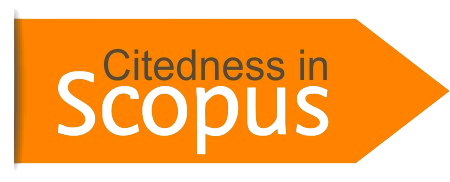PENGARUH TEKNIK REPEATED READING TERHADAP KEMAMPUAN READING FLUENCY PADA SISWA KELAS III SEKOLAH DASAR
DOI:
https://doi.org/10.15575/psy.v6i1.2134Keywords:
Repeated reading technique, reading fluency.Abstract
This research was conducted with students of grade III elementary school who are not fluent in reading with the goal to improve their reading fluency. Having quasi-experimental approach with single subject randomized time series design. researcher give repeated reading technique for 12 days. Every measurement session has data in WPCM score (word correct per minute). Comparison between pre-test and post-test show the increasing score of WPCM for 15.79. Error frequency and self-correction are getting decreased while reading expression is getting improved as the treatment session have. Repeated reading technique can improve reading influency.
References
Azwar, Saifuddin. 2000. Reliabilitas dan Validitas. Yogyakarta: Pustaka Pelajar.
Dechant, Emerald V. 1982. Improving the Teaching of Reading, Third Edition. New Jersey: Prentice-Hall Inc.
Dechant, E. V. 1991. Understanding and Teaching Reading : An Integrative Process. Prentice Hall Inc. New Jersey.
DeRuiter, J. A. & Wansart, W. L. 1982. Psychology of Learning Disabilities: Applications and Educational Practices. London: Aspen Systems Corporation.
Harris, A. J. & Sipay, E. R. 1980. How to Increase Reading Ability : A Guide to Developmental and Remedial Methods 7th Ed. Longman, Inc. New York.
Kumara, A. 2010. Mengasah Keterampilan Membaca pada Anak Melalui Belajar atau Bermain, Fakultas Psikologi Universitas Gadjah Mada.
Masjidi, Noviar. 2007. Agar Anak Suka Membaca : Sebuah Panduan bagi Orang Tua. Yogyakarta : Media Insani.
Graziano, Anthony M., Raulin, Michael L. 2000. Research Methods A Process of Inquiry : Fourth Edition. Boston: Allyn and Bacon.
Pusat Kurikulum Badan Penelitian dan Pengembangan Departemen Pendidikan Nasional. 2007. Model Kurikulum bagi Peserta Didik yang Mengalami Kesulitan Belajar.
Rief, Sandra F., Stern, Judith M. 2010. The Dyslexia Checklist: A Practical Reference for Parents and Teachers. USA : Jossey-Bass.
Samuels, S. J. 1979. The Method of Repeated Reading. The Reading Teacher.
Samuels, S. J. 2002. Reading Development: Its Development and Assesment. Dalam Farstrup, A. E. & Samuels, S. J. What Research Has to Say About Reading Instruction, 3rd Ed. International Reading Association.
Samuels, S. J. 2006. Toward a Model of Reading Fluency. Dalam Farstrup, A. E. & Samuels, S. J. What Research Has to Say About Fluency Instruction, 3rd Ed. International Reading Association.
Smith. N.A. & Robinson, H.A. 1980. Reading Instruction for Today’s Children 2nd Ed. Prentice Hall Inc. New York.
Sulistyaningsih, Mei. 2007. Bahasa Indonesia Untuk SD & MI Kelas III. Jakarta : Pusat Perbukuan Departemen Pendidikan Nasional.
Tankersley, Karen. 2003. The Threads of Reading : Strategies for Literacy Development. USA : Association for Supervision and Curriculum Development.
Tedick, D., Gortari, B. 1998. Research on Error Correction and Implications for Classroom Teaching. The Bridge, ACIE Newsletter. Center for Advanced Research on Language Acquisition, University of Minnesota,v1.
Vaughn, Sharon, Bos, Candace S. 2009. Strategies for Teaching Students with Learning and Behavior Problems : Seventh Edition. New Jersey : Pearson Education.
Downloads
Published
Issue
Section
Citation Check
License
The author whose published manuscript approved the following provisions:
1. The right of publication of all material published in the journal / published on the E-Journal of Psychology website is held by the editorial board with the knowledge of the author (moral right remains the author of the script).
2. The formal legal provisions for access to digital articles of this electronic journal are subject to the terms of the Creative Commons Attribution-ShareAlike license (CC BY-SA), which means that the Journal of Psychology reserves the right to save, transmit media / format, manage in database form, , maintain, and publish articles without requesting permission from the Author as long as it continues to include the name of the Author as the owner of Copyright.
3. Printed and published print and electronic manuscripts are open access for any purposes. In addition to these objectives, the editorial board shall not be liable for violations of copyright law.
Â






